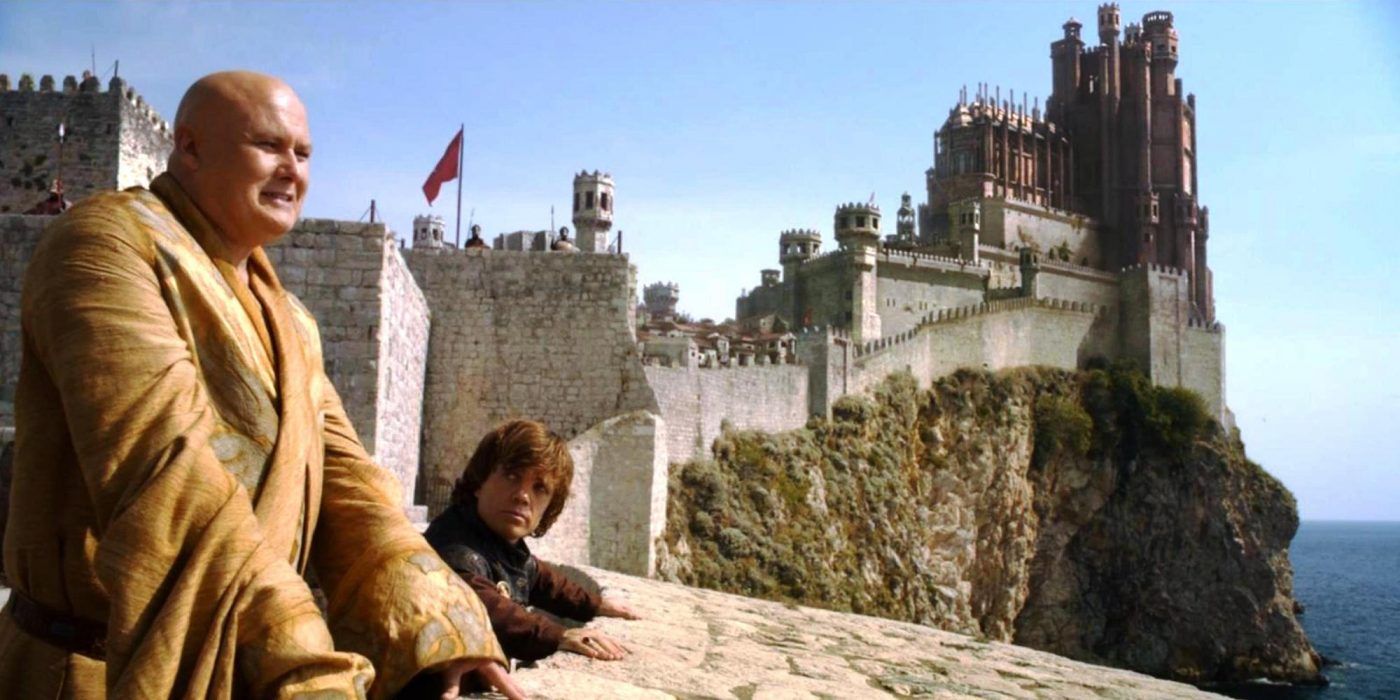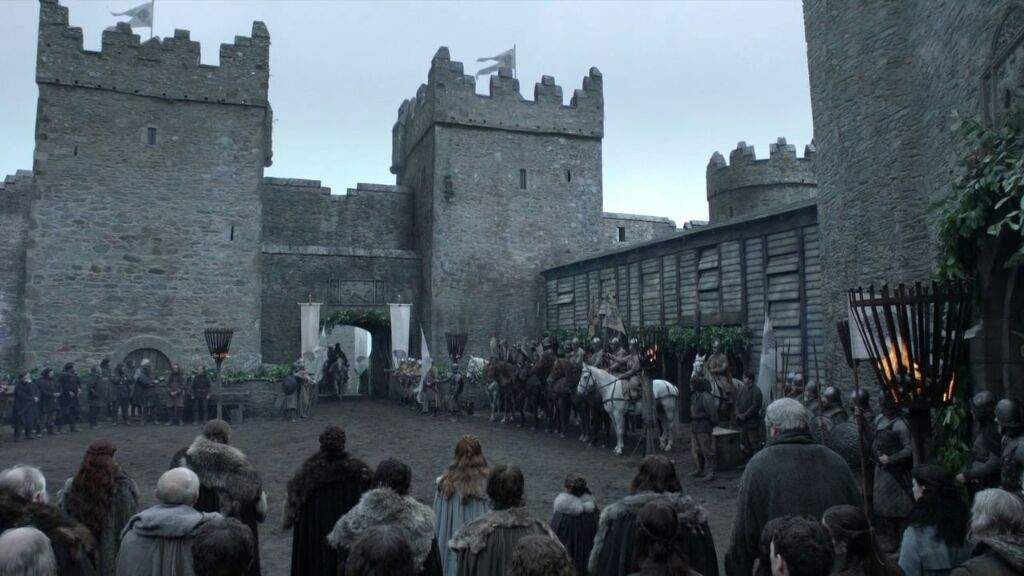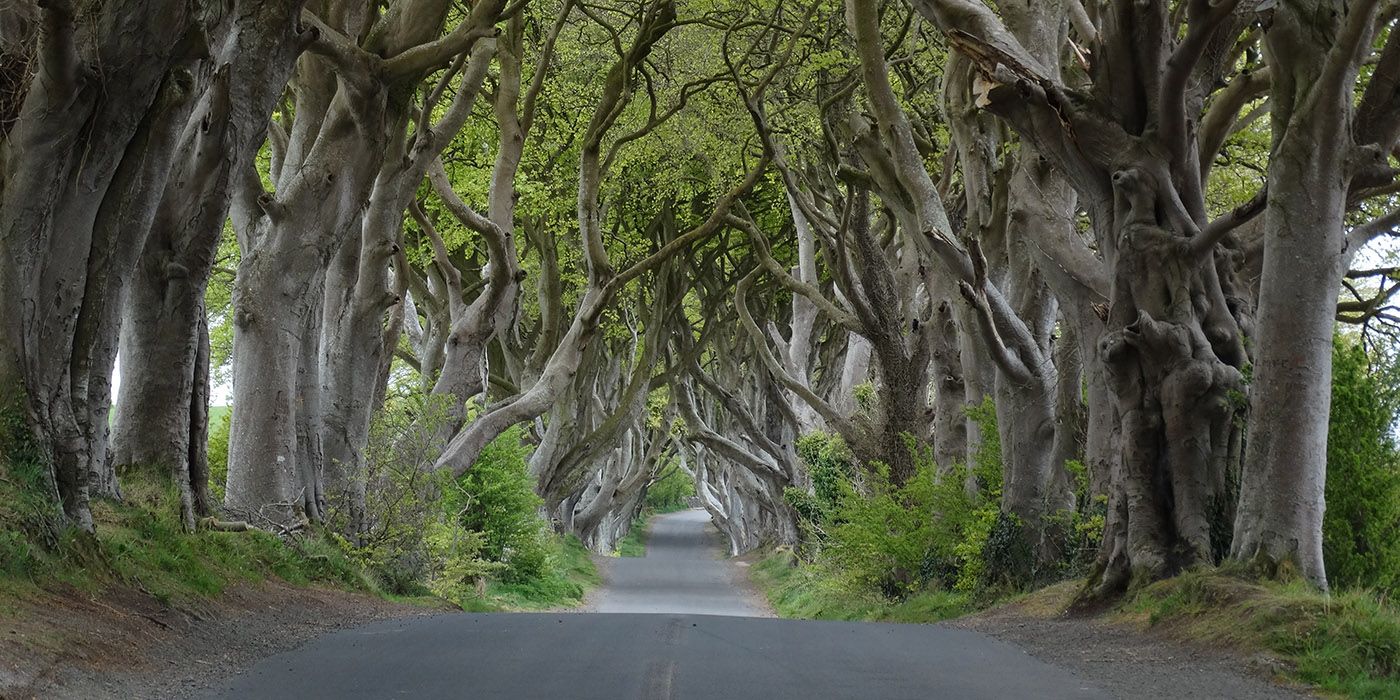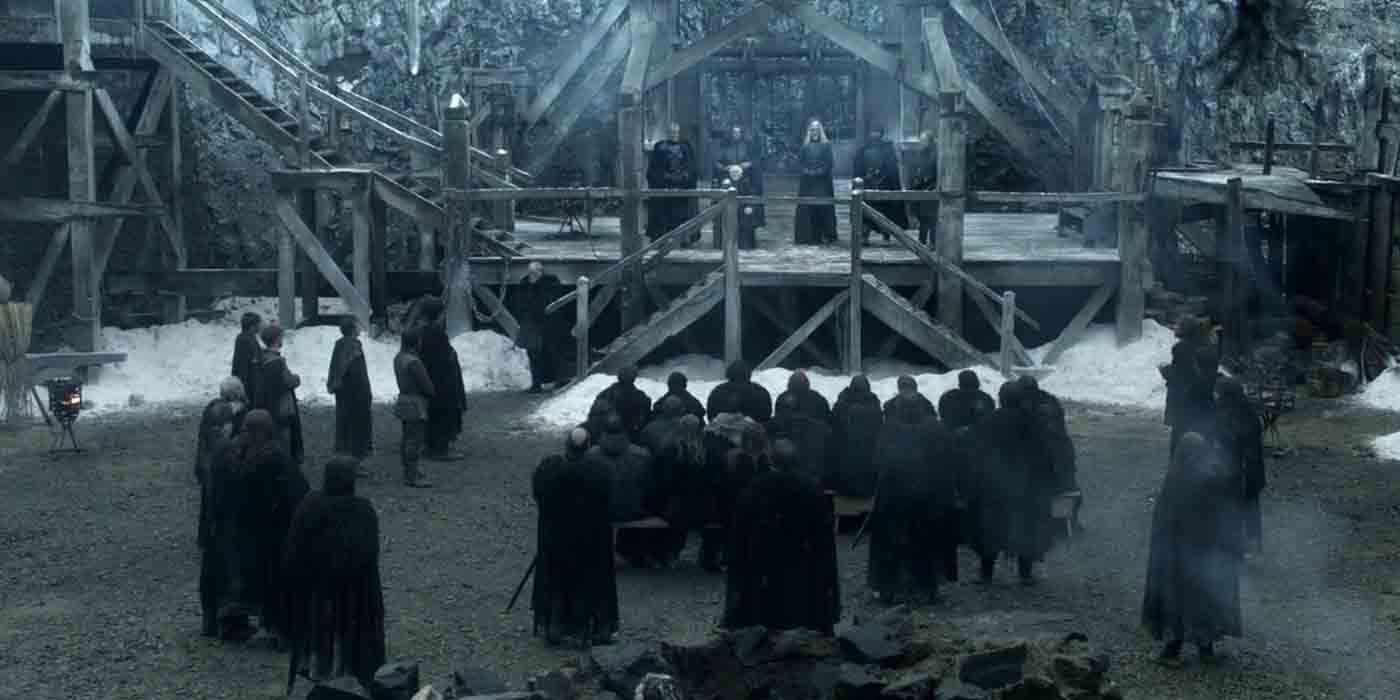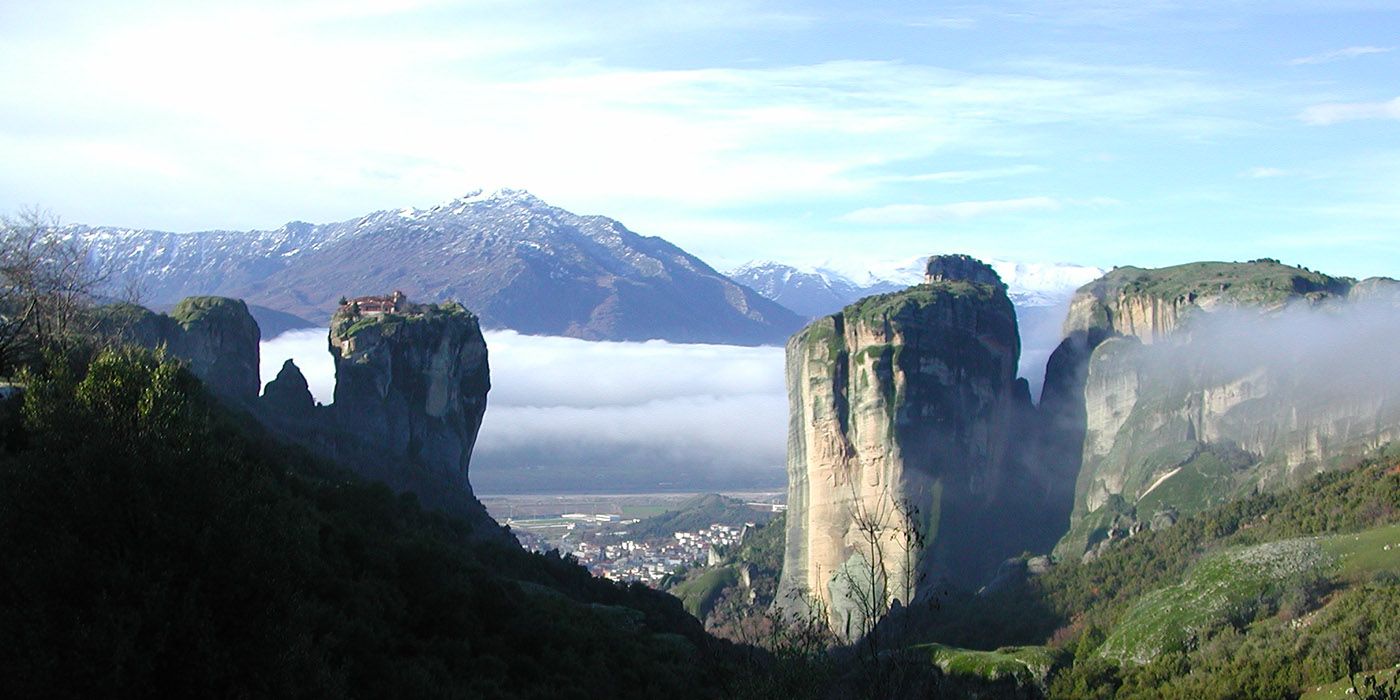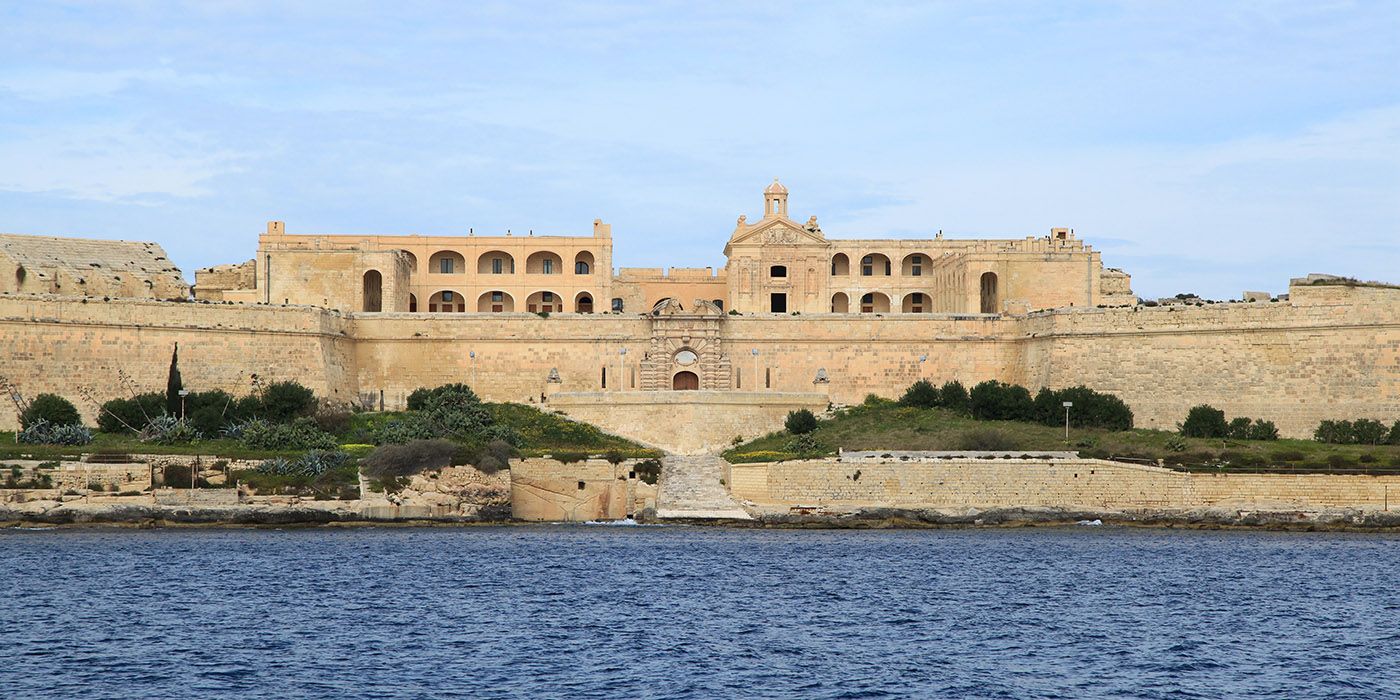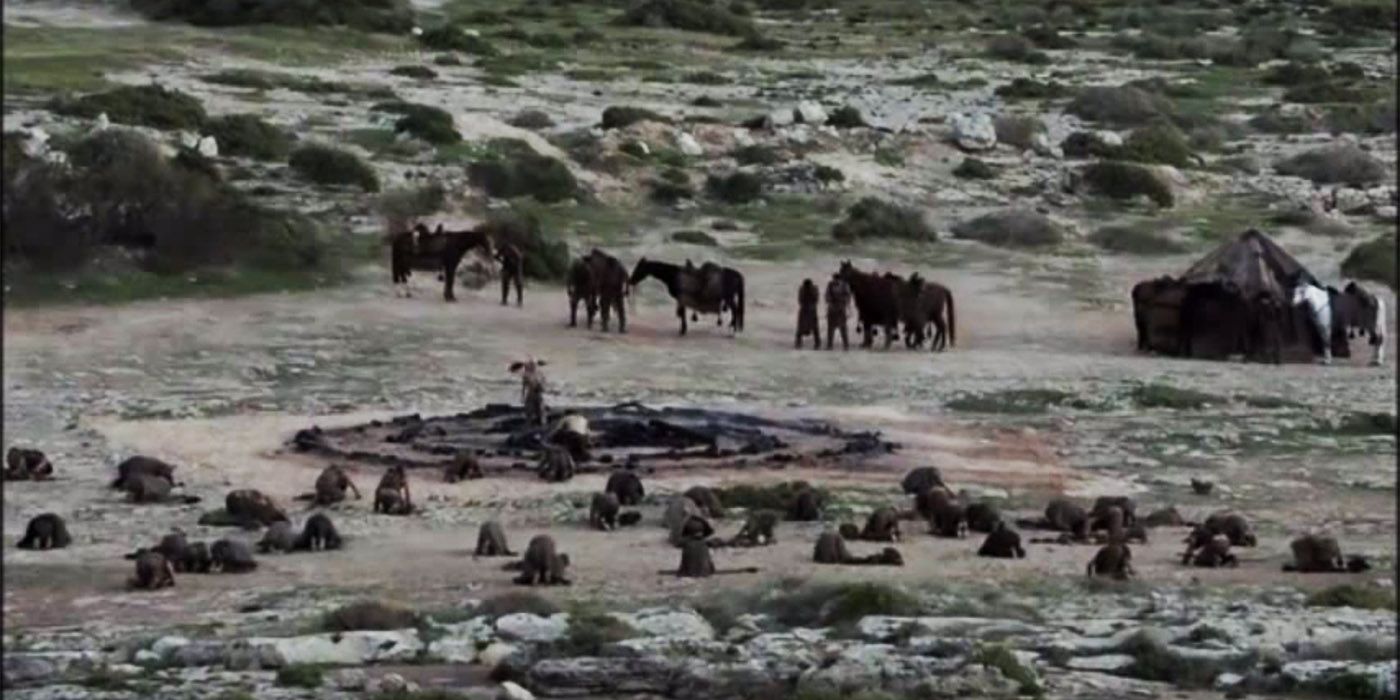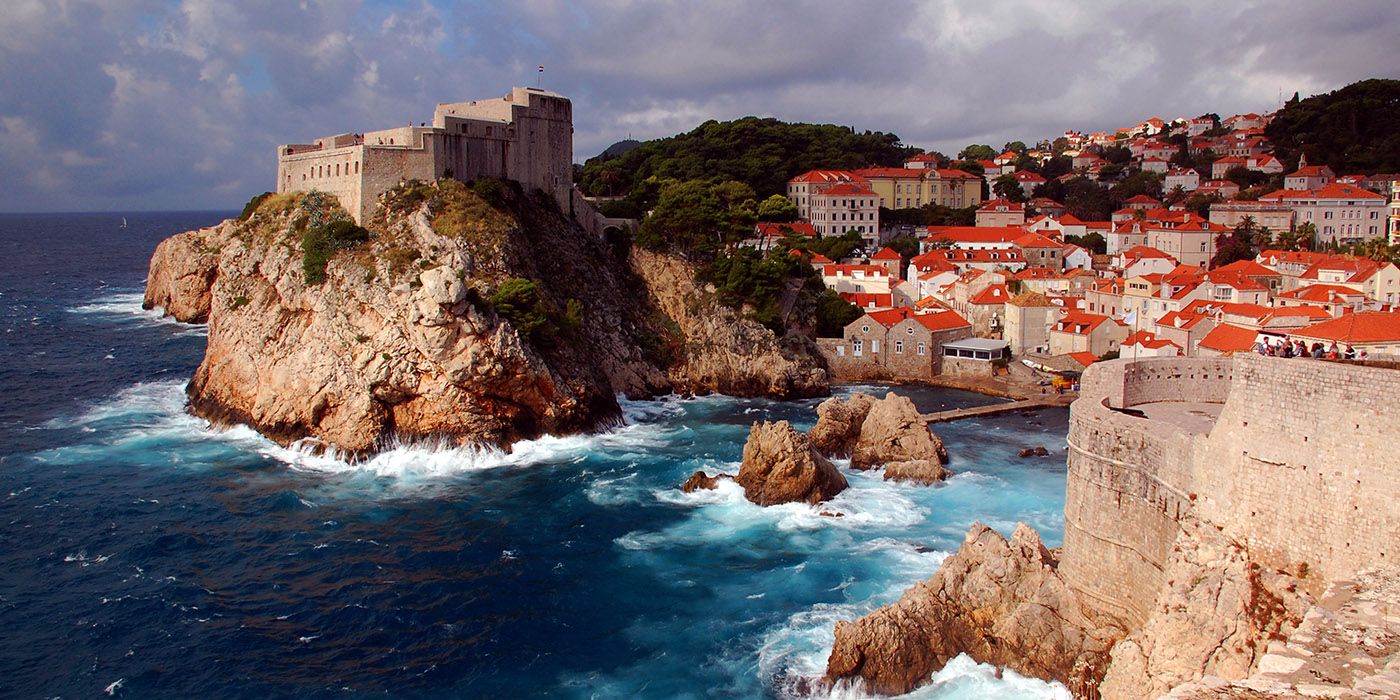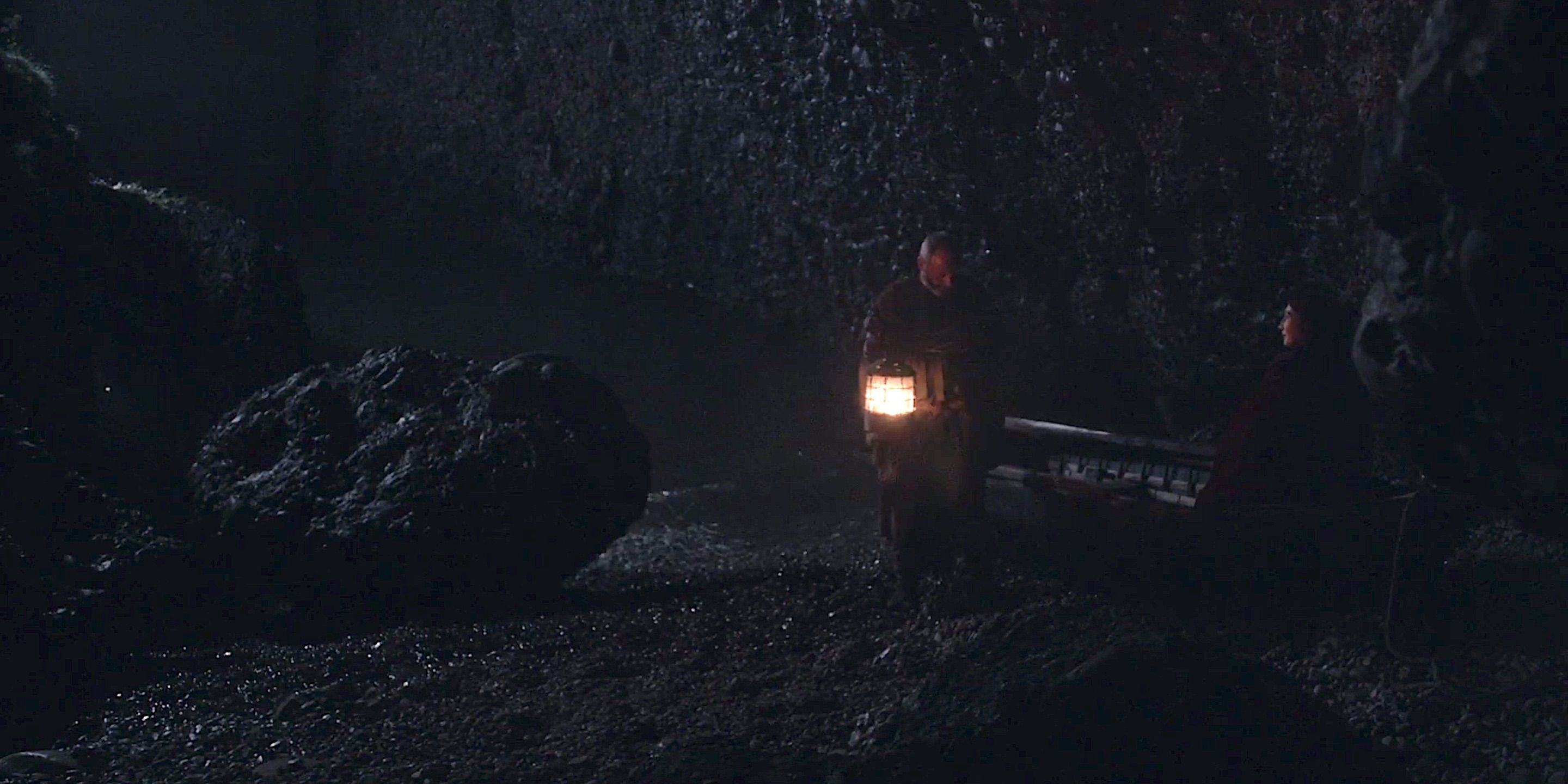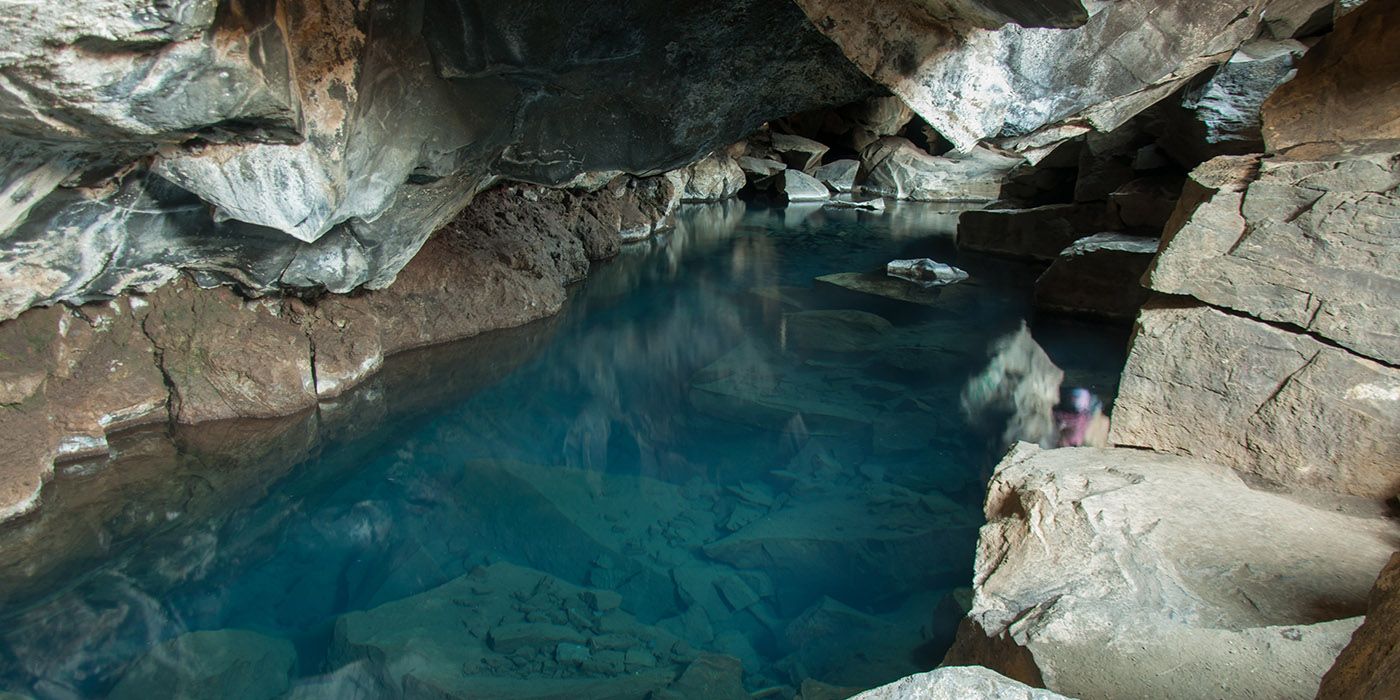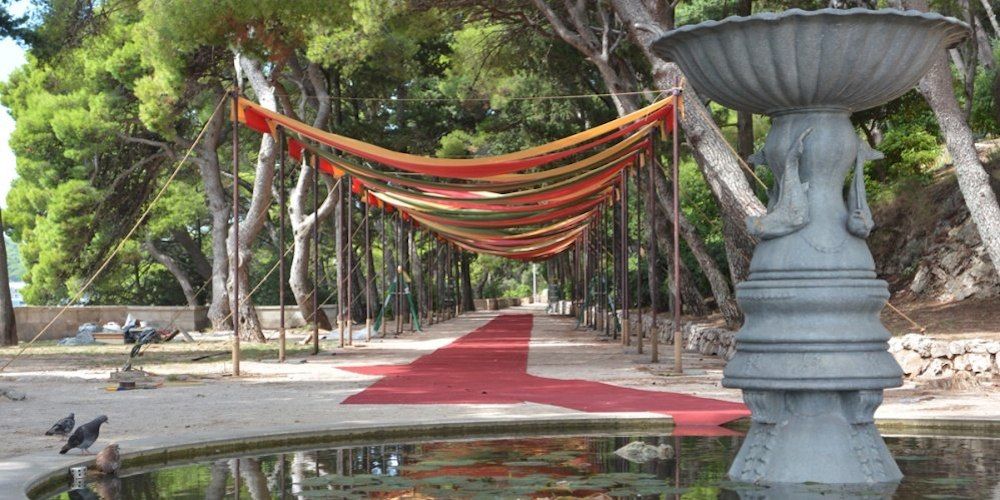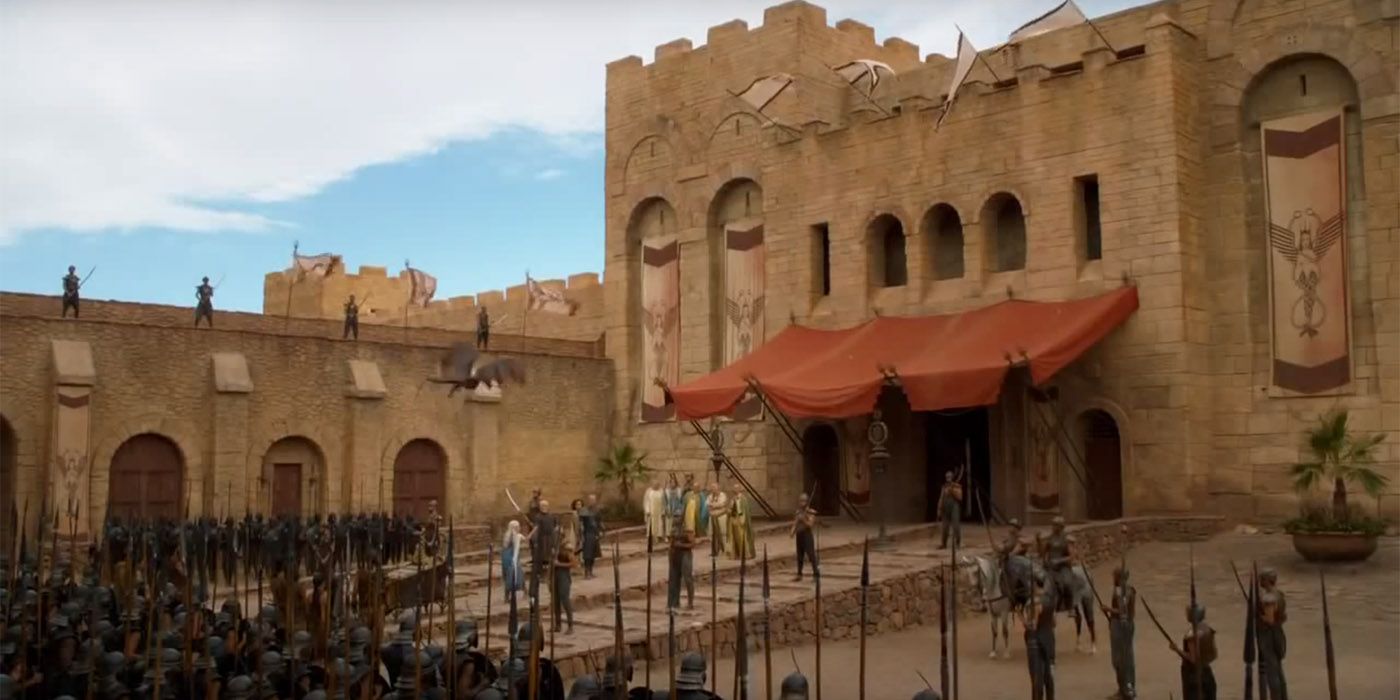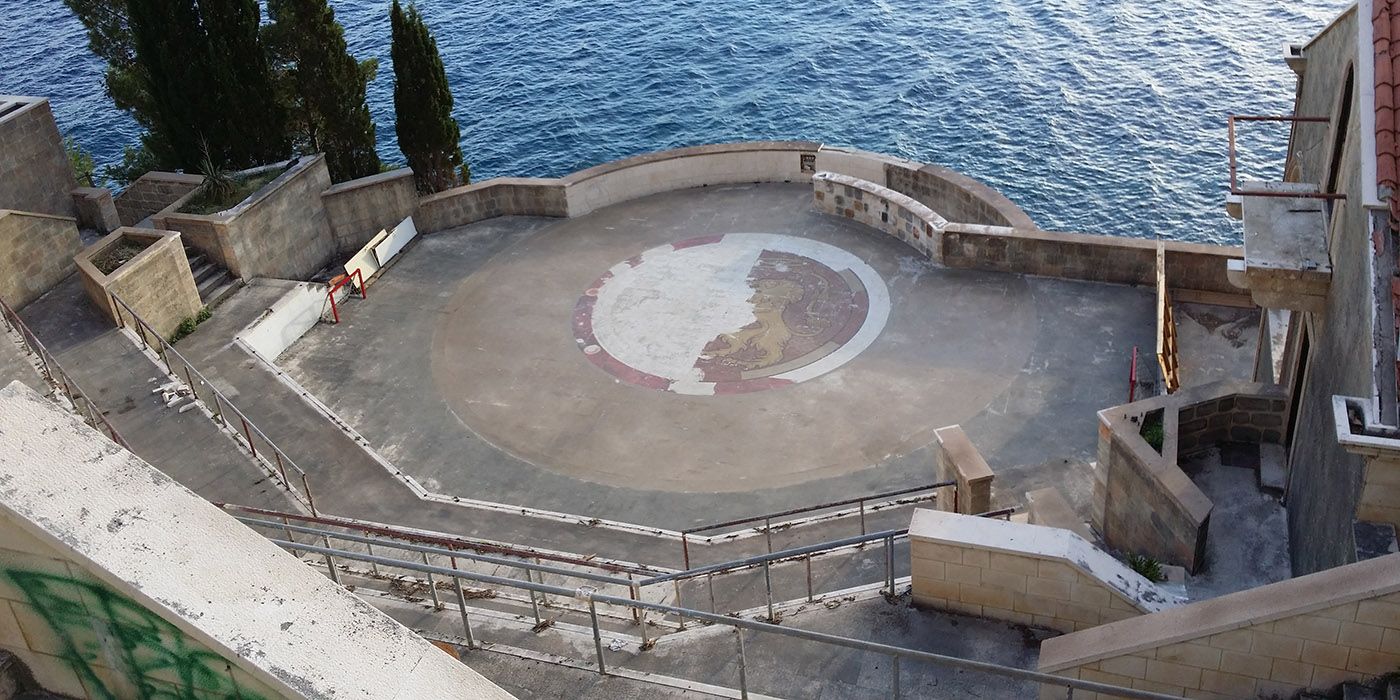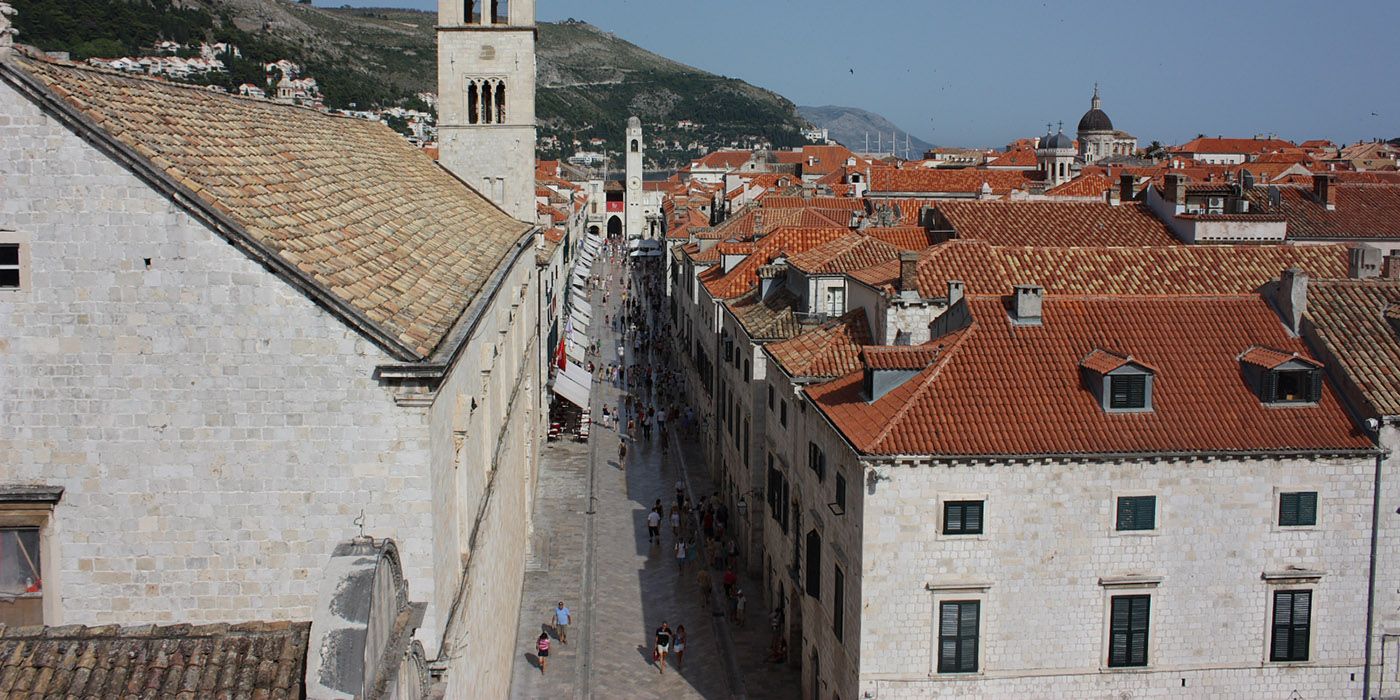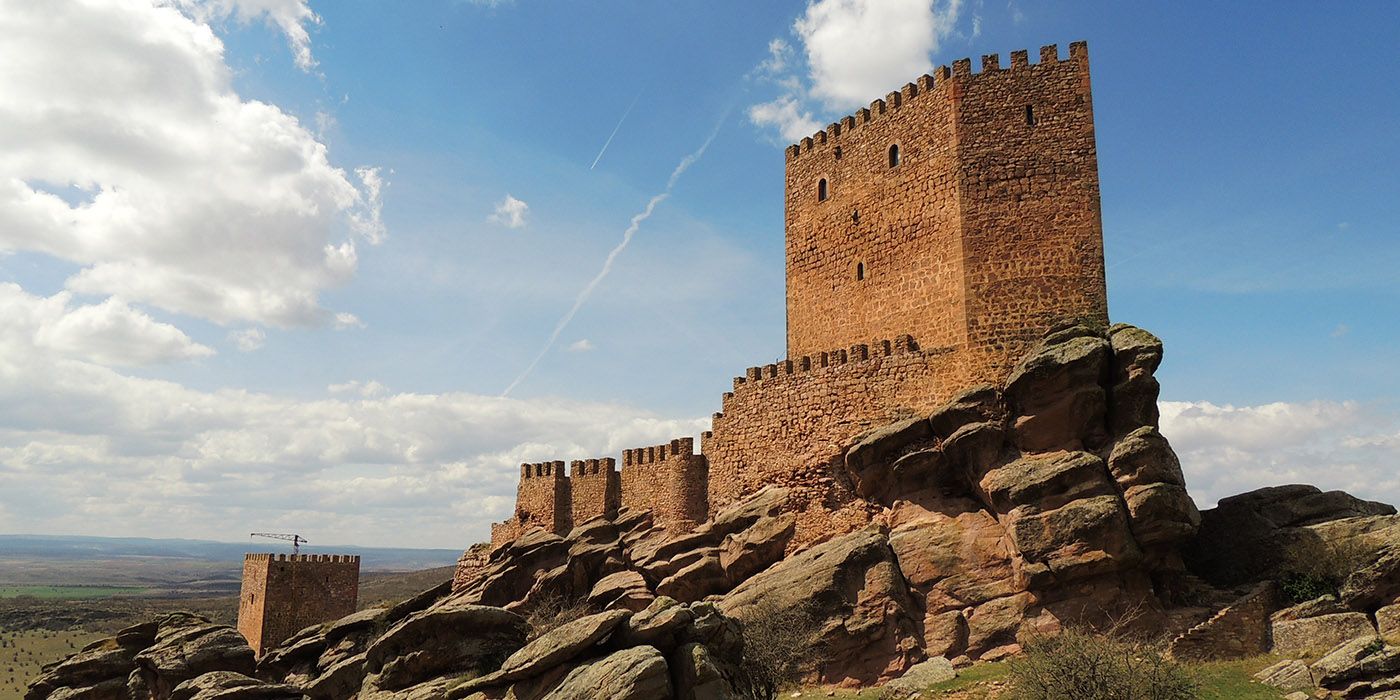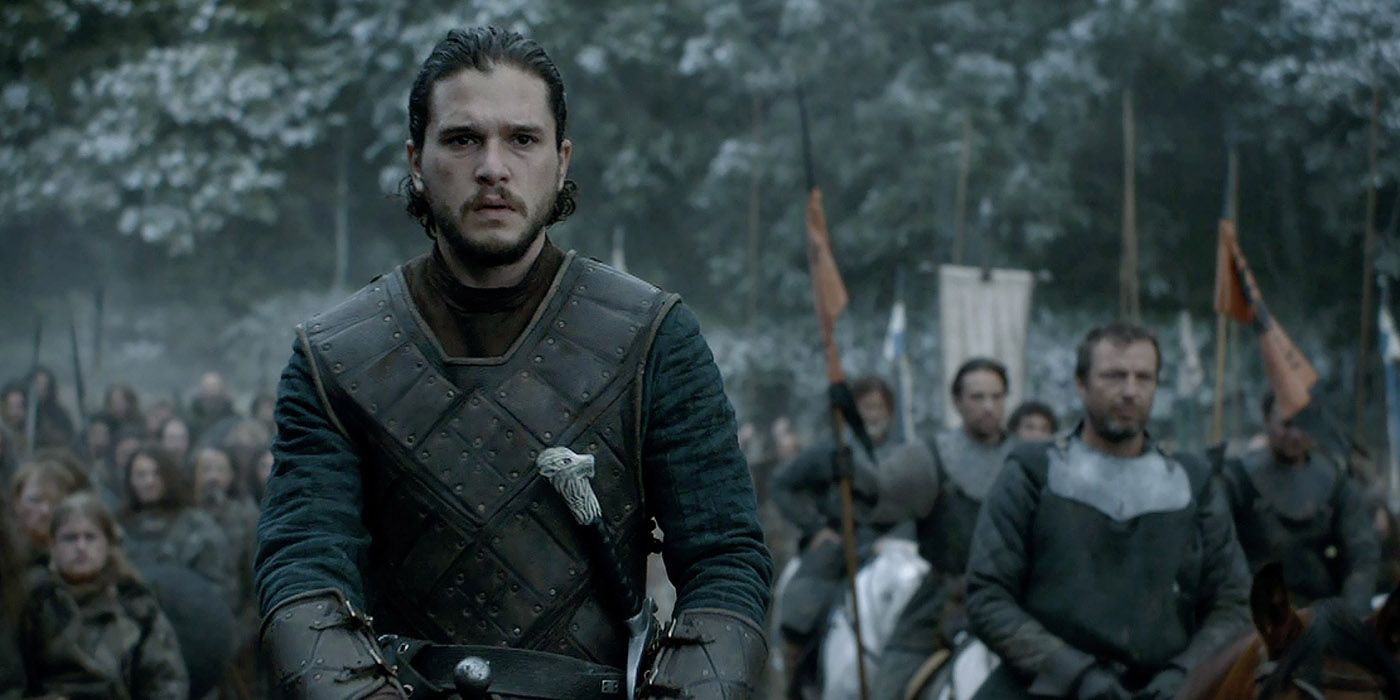Have you ever wanted to play the game of thrones yourself? You know, the one where "you win or you die"?
Probably not. But there is something loads of Game of Thrones fans want to do: visit the incredible real-world locations where the HBO hit has been filmed. Over the years, GoT has showcased some stunningly beautiful photography, largely through the use of real places in Europe and even parts of Africa. These locations are almost always augmented with CGI enhancements and additions, but the foundations and many of the intricate details are all real.
From a seaside, walled city in Croatia to numerous wintery locations throughout Ireland, from the Spanish plains to the deserts of Morocco, GoT definitely knows how to find breathtaking places to stand in for the varied geography of Westeros and Essos. Not every location the show has filmed in is accessible to the public, but many of them are. Here's a list of fifteen of the coolest places where Game of Thrones has filmed — all of which you can travel to and see for yourself.
It goes without saying, but if you're not caught up on Game of Thrones, then there are SPOILERS ahead.
Winterfell
It was one of the very first locations seen on the show, in the first episode of Season One. While the interior scenes — such as the underground crypts and the large dining hall where Jon and Sansa hold court with their allies in Season 7 — are filmed on soundstages, exterior Winterfell scenes are shot at Castle Ward in the town of Stangford, Northern Ireland.
Some of the scenery is from the actual castle itself, mostly filmed in the property's farmyard. The rest is artificial, built by the production, but still situated on the estate grounds. Winterfell is such a popular location for fans that Castle Ward has GoT-related attractions and tours available to visitors.
About an hour and a half north of Castle Ward is the wide open countryside of Knockdhu Promontory Fort. This is the location where poor Will, the Night's Watch deserter from the pilot episode, lost his head to Ned Stark's sword. Twenty minutes northwest of Castle Ward is where you'll find Rowallane Garden in the town of Saintfield, where Godswood scenes are filmed.
The King's Road
The King's Road is the long artery stretching from beyond King's Landing all the way up to the Wall, and the best-known thoroughfare in all of Westeros. King Robert Baratheon and his large traveling party take the King's Road when they visit Winterfell in Season One. Arya finds herself on the King's Road while traveling with men from the Night's Watch in Season 2.
In real life, King's Road scenes were filmed at the Dark Hedges in Northern Ireland. This famous path is lined by Beech trees that form a natural canopy overhead. The Dark Hedges has been called one of the most beautiful places on Earth, and it's one of the most photographed locations in Northern Ireland.
In January 2016, a massive storm blew over some of these famous trees, and the Northern Irish government had a novel idea: they used the wood from those fallen trees to build ten handcrafted doors. Each one was carved to represent one of the ten episodes of Game of Thrones Season 6. Northern Ireland gave these beautiful, one-of-a-kind doors to ten pubs that are local to various GoT filming locations. How cool is that?
Castle Black and The Wall
Another Northern Ireland location is Magheramorne Quarry, the abandoned limestone quarry where scenes at Castle Black and the bottom of the Wall are filmed. Knowing that Castle Black was to be an important location for the series, the show invested in building a functioning structure at the quarry, complete with interiors that can be filmed and a working elevator for the base of the Wall. Interiors include the dining area, barracks, and more.
It's an ideal place for the Wall in particular. The Wall is said to stand 700 feet high; the cliff face that stands in for the Wall on the show is more than half that tall. The sheer limestone wall is painted white to give it the appearance of ice. (The top of the Wall where the Night's Watch defended it from invading Wildlings was filmed on a soundstage.)
In addition to Castle Black and the Wall, the unforgettable Season Five battle at Hardhome was also filmed at Magheramorne Quarry after it was redressed to become the Wildling settlement.
The Eyrie
The Eyrie is a castle built impossibly high, atop a massive, vertical outcropping of rock pillars. It's the seat of House Arryn in the area known as the Vale. Tyrion Lannister was held prisoner there in Season One when Catelyn Stark believed him responsible for the attempt on the life of her son Bran. It returned in Season Five, when Petyr Baelish married and then murdered Lysa Arryn by shoving her through the Eyrie's famous Moon Door.
Here's a little secret. The Meteora Monasteries in Greece have become famous for being the site of the exterior of the Eyrie. But the truth is, nothing from the show has been filmed in Meteora. According to reports, the Greek government was too slow in providing the permits the show needed to film there. So while the show took its Eyrie inspiration from Meteora, the producers settled on a composite image that was mostly original.
A tiny bit of Meteora can be seen on the show, though. When Tyrion is held in a "sky cell," with its slanted floor and missing outside wall, he takes in a wide vista of the tall, rocky mountains surrounding the Eyrie. This view began as imagery from Meteora, but since the show couldn't get permission to film there, it was digitally altered enough to satisfy the legal red tape.
Eddard Stark's Beheading
Who can forget the shocking scene in the ninth episode of Season One, when the show's main protagonist, Lord Eddard Stark, was beheaded on the orders of newly-minted King Joffrey Baratheon? Book readers saw it coming, of course, but everyone else was stunned that the show would kill off its most recognizable star, Sean Bean.
In early seasons of the show, King's Landing exteriors were filmed in the island nation of Malta. King's Landing would eventually relocate to Dubrovnik, Croatia, but more on that later. For this pivotal scene, the huge walls of Malta's Fort Manoel were chosen. Fort Manoel dates back to the 18th Century, and has a long, storied history that includes taking heavy damage during World War II. (It's since been repaired.)
The island fort is located in the Malta city of Gzira on the island of Manoel. Fort Manoel has been closed for several years due to restoration work being done to the site, and currently, the government of Malta says that it has been reopened. But some have disputed this claim.
Khal Drogo's funeral pyre
In the Season One finale, Daenerys built a funeral pyre in the desert for her beloved husband, Khal Drogo of the Dothraki. As his body burned, she entered this same fire herself, along with her three supposedly-petrified dragon eggs. When morning dawned and the fire went out, Ser Jorah Mormont was stunned to discover that Daenerys survived the fire intact thanks to her Targaryen heritage, and her three eggs had hatched, bringing dragons back into the world.
This crucial sequence was filmed on Malta's west coast, in a rocky, sand-covered area called the Mtahleb Valley. This area is unique on the island in that it's almost completely untouched by manmade structures. Of course, filming in a barren desert so close to the coastline required some clever camera angles and a little ocean-erasing CGI.
Game of Thrones has become an incredible phenomenon for many reasons, and the clever location filming of amazing, real-world locations like Mtahleb Valley certainly plays a big part.
King's Landing
Starting in Season 2, the HBO production left Malta and migrated to Croatia. The oceanside city of Dubrovnik is where location shooting for practically all of King's Landing takes place. Dubrovnik is an ancient city that dates back to Medieval times, and has an "Old Town" sector that houses many iconic locations from the show.
Game of Thrones frequently shows an overhead view of King's Landing whenever a new scene is about to unfold there. This grand view typically shows the Red Keep on a hill in the distance, and until Season 6, the massive Sept of Baelor near the city's center; both of these structures were added digitally, but most of the view consists of the orange rooftops of Dubrovnik's Old Town.
Inside the walled city, there's a museum, the outside of which serves as the exterior of Littlefinger's brothel. The walls themselves can be seen during Season Two's Battle of Blackwater Bay, and a fortress on the edge of those walls is where Tyrion and Varys prepared for the battle. The lovely Trsteno Arboretum is where Olenna Tyrell set up shop whenever she visited King's Landing. Dozens more locations throughout Dubrovnik would be recognizable to GoT fans. Aside from King's Landing, Dubrovnik has also stood in for various locations visited by Daenerys in Essos.
Melisandre's shadow demon delivery
Who can forget the über-creepy scene in Season 2 when the Red Woman, after having sex with Stannis Baratheon, gives birth to a creature made of shadow and smoke inside a secluded cave? Ser Davos watched in horror — as did we — as Melisandre delivered this creature with Stannis' face into the world. Officially, it's known as a "shadow demon," and it would soon go on to murder Renly Baratheon.
In the series, the cave where Melisandre gave birth was located in a southeastern area of Westeros called Storm's End. In real life, the scene was filmed in the Cushendun Caves (sometimes called the Red Caves), which are in the small town of Cushendun, Northern Ireland. Cushendun is located on the northeastern edge of the nation.
Right on the coast, visitors will find a gravel walkway beside a series of steep hills made of solid rock. Embedded in the rock at the end of this path are the two caves known as the Cushendun Caves. Speaking of caves...
Jon & Ygritte's intimate encounter
In Season Two, while Jon Snow had Ygritte convinced that he'd turned on the Night's Watch to join the Freefolk north of the Wall, the two of them fell in love. At one point, she led him to a secluded cave where she seduced him. This served two purposes: to consummate their feelings toward one another, and to prove that Jon had revoked his Night's Watch vows, which forbade sex (or so we thought, until Samwell Tarly pointed out that nifty little loophole).
The beautiful grotto where their most intimate moment takes place is unnamed on the show, but in real life, it is Grjotagja Cave in Iceland. It was chosen by the show because it has a natural geothermal spring inside, a feature required for the scenes set there.
Grjotagja Cave is a historic landmark in Iceland, where it has been used as a bathing site for centuries. This lava cave still serves as a popular bathing spot to this day, though its temperatures have fluctuated over the years due to Icelandic volcanic eruptions.
The Purple Wedding
Everyone remembers the Red Wedding as one of the most shocking scenes in Game of Thrones' history. Unfortunately, there's no way to visit the site of the Red Wedding, as it was filmed entirely on a soundstage. But another wedding came soon after that was filmed in a real-world location: the Purple Wedding.
Depending on who you ask, the event was named the Purple Wedding for one of two reasons: it was the marriage of King Joffrey Baratheon and Margaery Tyrell, and purple is the traditional color of royalty, or, more simply, because Joffrey's face turned a purple-ish hue after he was poisoned.
The Purple Wedding's feast was filmed at Gradac Park in Dubrovnik, Croatia. The park features a wide open space surrounded by lush trees, old walls, and a grand, open view of Old City. This is where Game of Thrones built its set for the royal wedding feast, and it filmed the entire scene on location there. Below Gradac Park is the popular Danče beach, if you're looking to catch a little sun while you're thinking back fondly on Joffrey's purple faced death.
Astapor: Daenerys frees the Unsullied
In a powerful, game-changing episode in Season 3 of Game of Thrones, Daenerys Targaryen proves herself a cunning leader and a commander to be reckoned with when she tricks Astapor's "Good Masters" into parting with their vast army of slave warriors known as the Unsullied — and then orders the army to kill all of the Masters. It's an unforgettable moment on the show, and a huge set piece that showcases Emilia Clarke's range as an actress.
This incredible scene was filmed in the city of Essaouira, Morocco. More specifically, it happened at a standing set at Atlas Studios, one of Essaouira's biggest claims to fame. Atlas has housed many huge productions that call for a desert setting, including Gladiator, Lawrence of Arabia, Patton, The Mummy (1999), the James Bond film The Living Daylights, and many more.
Atlas Studios is open to the public with tours available daily. Strangely, Atlas' website contains no mention of Game of Thrones, but there's plenty of photographic evidence to prove that the show did film this important scene there. Atlas even comes with its own hotel to accommodate guests.
Oberyn Martel vs. The Mountain
A climactic — and gruesome — moment in the show comes when Oberyn Martel volunteers to be Tyrion's champion in a trial by combat. The only problem? Cersei's chooses Ser Gregor Clegane as her champion. This enormous mass of muscle is known as The Mountain, and the wiry but spry Oberyn seems outmatched. Until he springs into action, that is, proving himself a highly skilled warrior in his own right. He even defeats The Mountain, but before Clegane breathes his last, he wills himself to take Oberyn's head in his hands and crush it — which the show depicted in gory detail.
It's a visual that many fans would rather forget, yet the battle preceding it features some of the best fight choreography GoT has ever filmed. This show-stopping scene was filmed in the city of (you guessed it) Dubrovnik, Croatia, but at a very interesting location within the city walls.
The trial by combat was filmed in the courtyard of an abandoned hotel in Dubrovnik called the Belvedere Atrium, which was destroyed during the Croatian War of Independence in the early '90s. The show had to obtain special permission to film there. It's not open to the public for visiting due to the dangers of the ruined structure, but the courtyard where the fight was filmed is easily visible from outside the property.
The Great Sept of Baelor & Cersei's Walk of Penance
While there have been a number of major scenes filmed inside the soundstage that houses the Great Sept of Baelor set, the outside of the Sept has seen its fair share of memorable moments as well. Who can forget Cersei Lannister's naked "Walk of Penance" in Season 5, which she undertook to be released from prison? Or her shocking destruction of the Sept with wildfire at the end of Season 6?
The Walk of Penance was filmed in Dubrovnik, on the Stradun, the main street of Old Town. "Stradun" is actually an unofficial name for the walking-only thoroughfare, lined by lovely Baroque architecture, which runs from the main Old Town entrance in the east to the twin entrance in the west.
So it may come as a surprise to learn that the Sept of Baelor exterior — which the Stradun appears to lead to on Game of Thrones — is actually located in Girona, Spain. Its official name is the Cathedral of Saint Mary, but it's known to locals as the Girona Cathedral. With ancient roots, its history includes serving as both a mosque and a church. It doesn't look much like the Sept of Baelor, but the show primarily uses it for street-level photography.
Both sites are open to the public.
Tower of Joy
Season Six finally answered the longstanding question of Jon Snow's true parentage. Via flashbacks seen through Bran Stark's greenseer visions, the famous battle where Ned Stark and Howland Reed faced off against legendary swordsman Arthur Dayne is also Jon's birthplace. Thankfully, Season 6 finally confirmed that Jon is indeed the son of Lyanna Stark and Rhaegar Targaryen, a secret honorable old Ned took to his grave.
This thrilling sequence played out across two episodes of the season, the former featuring the sword fight and the latter revealing Lyanna's labor, which resulted in her death. The entire sequence takes place at a location called the Tower of Joy, which is located in Dorne, and where Rhaegar reportedly hid Lyanna away after he either abducted her or she ran away with him (the jury's still out on that).
The Tower of Joy in real life is Castillo de Zafra in Guadalajara, Spain. Castillo de Zafra dates back to the 13th Century, and has the distinction of having never been conquered by a warring faction, despite many attempts. Tourists can visit the castle with permission of its current owner, Daniel Antonio Sanz.
Battle of the Bastards
Season Six's massive fight for Winterfell was a harsh, thrilling look at the grim nature of Medieval warfare. From Ramsey Bolton's devious surrounding and entrapment of Jon Snow's entire army to the gut-wrenching moment when Jon is nearly smothered beneath the dead and dying, it was a seriously intense hour of television.
The Battle of the Bastards was filmed in its entirety at a privately-owned field in the town of Saintfield, Ireland. Just exactly which field it was and who its owner is, is information not widely known. But in Saintfield, it's the worst-kept secret in town. Further filming reportedly took place in Saintfield for Season Seven (unrelated to Bastard Bowl 2016).
Game of Thrones had to bring fake snow to the field to simulate the arrival of winter, along with loads of gravel to give the horses traction on the muddy field. CGI was used to expand the 500 extras into two armies of thousands. The sequence reportedly took 25 days to film and, unsurprisingly, had the highest budget of any Season Six episode. It's safe to say that it was worth the effort.
--
Which Game of Thrones location would you want to visit the most? Let us know in the comments.

